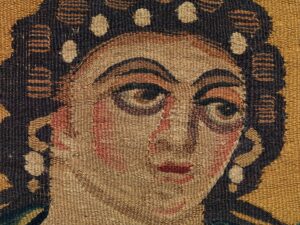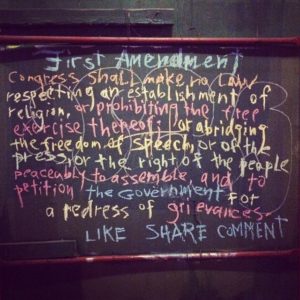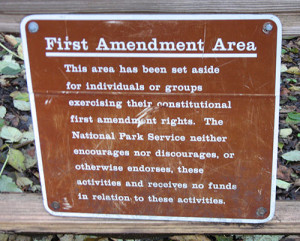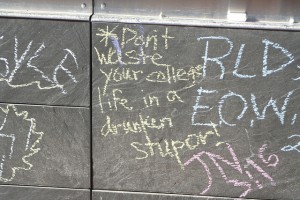A year ago, this blog reported about the Hermès v. Rothschild case, a trademark infringement suit filed by French fashion house Hermès against artist Mason Rothschild.
Rothschild had created in December 2021 the MetaBirkins series, a series of 100 non-fungible tokens (NFTs) featuring digital images of blurry Birkin Hermès bags covered in fake fur. The NFTs, which are retaining digital records of ownership of the images on a blockchain, sold “for prices comparable to real-world Birkin handbags” as noted by Judge Jed S. Rakoff, from the U.S. District Court for the Southern District of New York (SDNY), in his May 18, 2022 Order, denying Rothschild’s motion to dismiss.
On December 30, 2022, Judge Rakoff denied the parties’ cross motions for summary judgment, with opinion to follow.
Plaintiff and Defendant had both asked the Court to answer two questions:
- Should the MetaBirkins be evaluated using the two-part Rogers v. Grimaldi test used when evaluating trademark infringement in artistic works or the Gruner + Jahr test used for general trademark infringement?
- Whichever test is applied, do the MetaBirkins dilute the Hermès’ BIRKIN trademarks?
Judge Rakoff published his opinion on February 2, 2023. He reaffirmed, as he did in his May 18, 2022 Order, that the trademark infringement claim should be assessed under the Rogers v. Grimaldi test. However, as genuine issues of material fact remained, the second question had to be answered by a jury, who had to decide whether Rothschild’s decision to focus the series on the Birkin bag was made for artistic expression purposes or merely to use the BIRKIN trademark.
The Rogers test
Under the Rogers test, there is no trademark infringement if defendant uses a mark as the title of an expressive work, or as part of the expressive work if use of the trademark (1) does not have any artistic relevance whatsoever to the underlying work and (2) is not explicitly misleading.
For Judge Rakoff, the Rogers test must be used in this case because:
“Rothschild’s use of Hermès’ marks did not function primarily as a source identifier that would mislead consumers into thinking that Hermès originated or otherwise endorsed the MetaBirkins collection, but rather as part of an artistically expressive project.”
Judge Rakoff reasoned that the title “MetaBirkins” refered to both the NFT and the digital images with which it is associated and that “MetaBirkins” did not, as argued by Hermès, refer only to the NFTs “separate and apart from the digital images” of the faux-fur bags. The NFTs are artistic expression.
Judge Rakoff noted further that Rothschild “viewed the project as a vehicle to comment on the Birkin bag’s influence on modern society”, stating in an interview that the series was “an experiment to see if [he] could create that same kind of illusion that [the Birkin bag] has in real life as a digital commodity”, and that he had decided to cover the bag in fake fur “to introduce “a little bit of irony” to the efforts of some fashion companies to “go fur-free.” Indeed , the artist wrote that the series“ inspired by the acceleration of fashion’s “fur free” initiatives and embrace of alternative textiles.”
While an artistic expression, the First Amendment could not be a defense. Judge Rakoff quoted the Second Circuit Twin Peaks Prods., Inc. v. Publications 1993 case which held that even if a trademark’s use bears “some artistic relevance” to an underlying artistic work, such use is not protected by the First Amendment if it “explicitly misleads as to the source or the content of the work.”
The Second Circuit noted in Twin Peaks that ”the finding of likelihood of confusion must be particularly compelling to outweigh the First Amendment interest recognized in Rogers” and that the Polaroid factors must be applied to determine whether or not there is likelihood of confusion and thus trademark infringement.
Judge Rakoff explained that “the most important difference between the Rogers consumer confusion inquiry and the classic consumer confusion test is that consumer confusion under Rogers must be clear and unambiguous to override the weighty First Amendment interests at stake.”
The Rogers test was indeed used by a federal jury to determine whether or not the MetaBirkins infringed Hermès’ trademarks, but, following a six-day trial, a jury found on February 14, 2023, that Rothschild was liable on the claims of trademark infringement, trademark dilution, and cybersquatting, that the First Amendment was not a defense, and awarded Hermès $133,000 in damages.
Trademark dilution and blurring
Hermès had also claimed trademark dilution and blurring, which refers to use of a famous trademark in a way which dilutes such famous mark by blurring or tarnishment. A famous mark is defined by the Trademark Dilution Revision Act (TDRA) as widely recognized by the general U.S. consuming public as a designation of source of the mark owner’s goods or services.
The jury found that the BIRKIN mark was blurred by Rothschild’s by blurring the distinctiveness of the famous BIRKIN mark and diminished its capacity to identify and distinguish Hermès’ goods and services, regardless of the presence or absence of actual or likely confusion, of competition, or of actual economic injury.
Cybersquatting
The jury also held in favor of Hermès, which had claimed that the <metabirkins.com> domain name was cybersquatting. To prevail on a cybersquatting claim, Hermès had to prove (1) that the BIRKIN mark was distinctive at the time <metabirkins.com> was registered; (2) that the <metabirkins.com> domain name is identical to, or confusingly similar to, Hermes’ s BIRKIN mark; and (3) that Rothschild had a bad faith intent to profit from the BIRKIN mark.
The court’s instructions to the jury explained that when determining whether Rothschild acted in bad faith on this claim, the jury had to consider whether the artist used the domain name in connection with the offering of any goods or products and whether he “intended to divert consumers from the mark owner’s online location to a site that could harm the goodwill represented.”
Trademarks, symbols and humor
While the primary function of a trademark is to indicate the source or a product or service, some trademarks have become symbol and are used by consumers to provide a desired cachet, one of luxury and exclusivity in the case of the BIRKIN trademark.
The Birkin bag created by Hermès was named after actress and singer Jane Birkin. While expensive, they sell well: as noted by Judge Rakoff in its February 2, 2023, opinion, since 1986, Hermès has sold over $1 billion worth of Birkin handbags in the United States, $100 million dollars’ worth in the past ten years. Both parties recognized that it is a “symbol of wealth and exclusivity.”
The MetaBirkins sold in total over $1.1 million through June 2022 and it is likely that at least some bought them as symbol of their wealth, taste, and sense of irony. However, unlike in the case of Jack Daniel’s Properties, Inc. v. VIP Products LLC, a case about dog chew toys resembling Jack Daniels bottles, the use of the BIRKIN mark was not humorous.


 In this case, Plaintiffs are Disney Enterprises, Marvel Characters and LucasFilm, all of which own copyrights and trademarks in many of the most famous characters in the world, such as Mickey Mouse, Hulk, and Chewbacca. These characters were first featured in movies like Frozen, The Avengers or Star Wars, and are now licensed or featured in derivative products such as comic books, video games, or theme parks. Their exploitation is highly lucrative.
In this case, Plaintiffs are Disney Enterprises, Marvel Characters and LucasFilm, all of which own copyrights and trademarks in many of the most famous characters in the world, such as Mickey Mouse, Hulk, and Chewbacca. These characters were first featured in movies like Frozen, The Avengers or Star Wars, and are now licensed or featured in derivative products such as comic books, video games, or theme parks. Their exploitation is highly lucrative.








